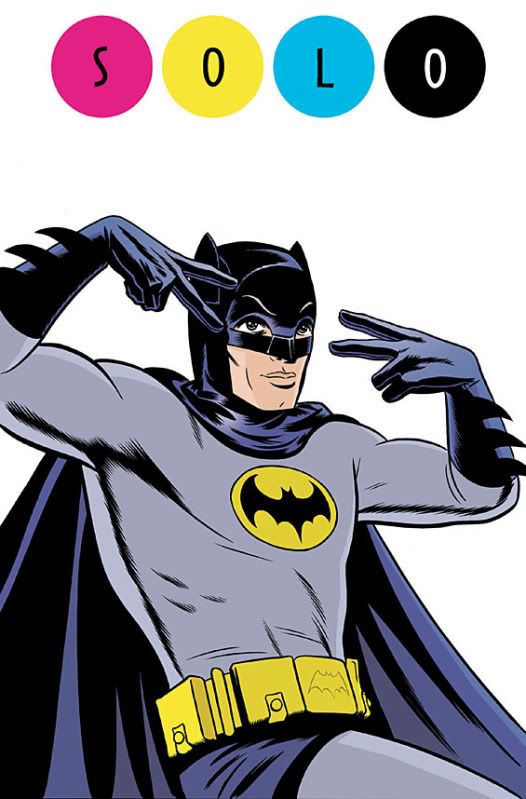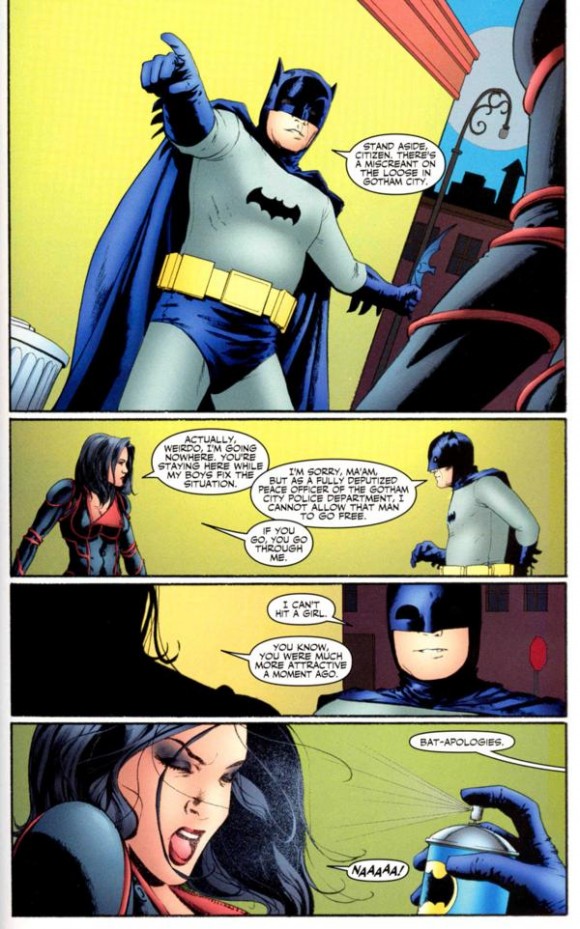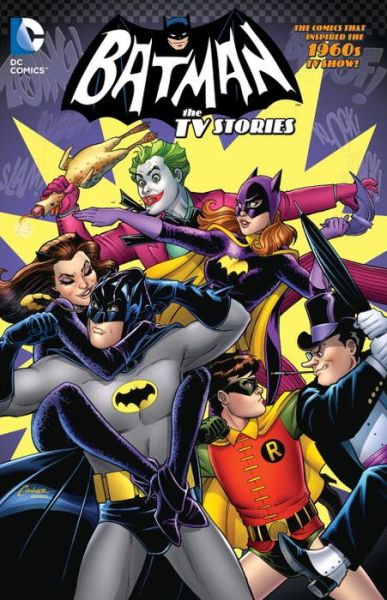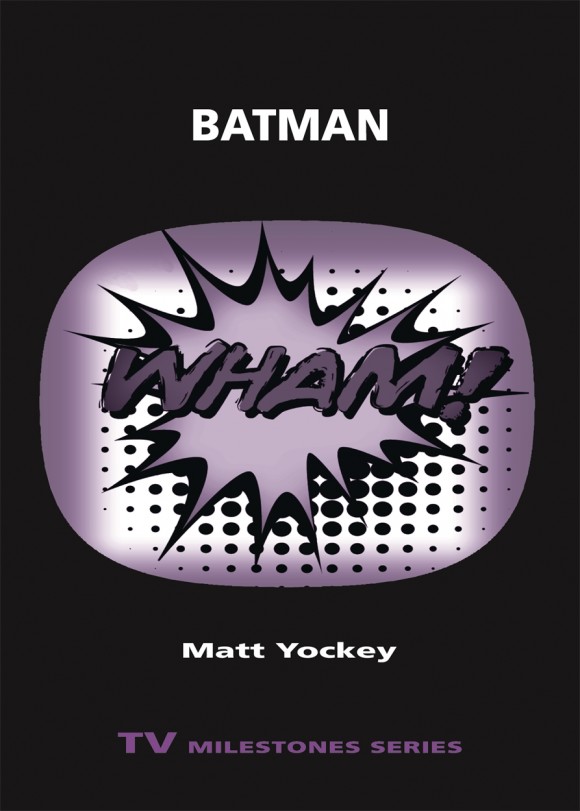Writer Matt Yockey puts a Batbow on BATMAN ’66 WEEK, with some perspective of on comicdom’s on-and-off relationship with the Adam West TV show.
By MATT YOCKEY
While ABC’s Batman television series famously revived the sagging sales of Batman comic books (especially in that inaugural Bat-year of 1966), after the show was canceled in March 1968, DC Comics increasingly distanced itself from the campy tone of the show.
For many Batman fans, the show has always existed in uneasy tension with what they have considered to be the defining ethos of the character as a grim avenger of the night, as established in his first year of existence.
This idea of Batman as the Dark Knight was reestablished in the comics by Denny O’Neil and Neal Adams’ legendary work on the character in the early Seventies and extended by Frank Miller in the Eighties.
Adams opined that the TV show “ran roughshod” over the character and in 1987 Miller, whose Dark Knight Returns and Batman: Year One were as removed from the TV show as Heath Ledger’s portrayal of the Joker was from Cesar Romero’s, declared in the book “The Batcave Companion“: “For me, Batman was never funny.”
For many years it has appeared that DC maintained an unofficial campaign to make memories of the show disappear by avoiding references to it in the comics (an avoidance also motivated by issues with images related to the show).
In 2005, Mike Allred tried, but failed, to get his depiction of a West-like Batman doing the Batusi onto the cover of Solo #7 (Wonder Girl ended up serving as a stand-in instead), indicating that the show was still regarded as toxic to the Batman brand.
However, there was no hiding Allred’s homage to the Camped Crusader in the story “Batman A-Go-Go!” that appeared inside. Explaining why the Riddler was the villain of the story, Allred said in “The Batcave Companion”: “Easy. The ‘Batman’ TV show’s first episode with the Riddler is one of my earliest childhood memories.”
Meanwhile, in 2003 in the highly self-reflexive Planetary, Warren Ellis positioned the series in the flow of Batman’s textual history by having his protagonists meet the Adam West version in a series of encounters with various iterations of the character.
It seems that despite the best efforts of DC and many “anti-fans” of the show to keep him tucked away as an unfortunate aberration in the history of the character (like a bad haircut you got one summer), the campy Batman persists as one of the most memorably fun expressions of superhero-dom.
As Batman: Year One artist David Mazzucchelli offered in the deluxe edition of the book, “The Adam West TV show is an extremely faithful translation of a comic book into live action.” As such, it’s appropriate that more recently DC has finally fully acknowledged the intimate relationship between the show and the comics, first by launching the series Batman ’66 and with the publication of an anthology of comic book stories that inspired various episodes (and the overall tone) of the show, “Batman: The TV Stories.”
Meanwhile, DC’s hardcover collection of the Solo comic book series that was released last summer features Allred’s previously suppressed image of the Batusi-ing Batman as its cover. In fact, in perhaps the ultimate act of poetic Bat-justice, the introduction to “Batman: The TV Stories” was written by Michael Uslan, whose efforts to get Tim Burton and Christopher Nolan’s Batman films made, as chronicled in the book “The Boy Who Loved Batman,” were the realization of his stated childhood goal to “eliminate these three little words from the collective consciousness of the world culture: Pow! Zap! and Wham!”
Yet, those three little words echo across the decades as vividly as “A bat! That’s it! It’s an omen…” have. When we hear or read them they transport us to a time in our lives when our superheroes were defined by casual lightness and grinning earnestness, not piercing psychic pain and grim and gritty realism.
Pow! Zap! and Wham! are the sounds made by the beating heart of the superhero genre, its pulse set to our own accelerated rush toward a childhood joy and innocence that (like a costume change while sliding down the Bat-pole) is instantly recalled and reclaimed.
The Batman TV show has come home and so then have we.
Matt Yockey is the writer of the forthcoming “Batman” from the appropriately named Wayne State University Press TV Milestone Series.
Leave a comment, citizen!







January 19, 2014
Batman is Not Real – lol. Why can’t we Love all versions of the character for different reasons? I love TV Batman and Nolan’s Batman. Love Miller’s Batman and 50’s era Batman. Comics are fer kids, remember? Or at least the young at heart. I love grim and gritty but old guys reading comics is kinda creepy. I think this is what keeps the character alive.
October 12, 2014
Ditto…………………..